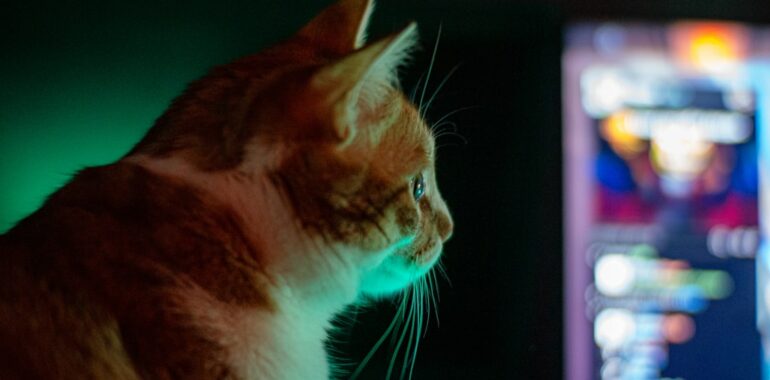How to Integrate Arduino with Your Website for Real-Time Pet Health Monitoring

Meta Description: Learn how to seamlessly integrate Arduino with your website to establish a real-time pet health monitoring system. Enhance your pet care routine with step-by-step guidance.
Introduction
In today’s fast-paced world, ensuring the health and well-being of our beloved pets can be challenging. Traditional methods of monitoring often fall short, leaving pet owners wanting more precise and real-time insights. Enter the world of real-time pet monitoring—a revolutionary approach that leverages technology to keep a constant eye on your pet’s health. By integrating Arduino with your website, you can create a comprehensive system that provides invaluable data, enhancing your ability to care for your furry friends.
Benefits of Real-Time Pet Health Monitoring
Implementing a real-time monitoring system offers numerous advantages:
- Continuous Health Tracking: Monitor vital signs like heart rate, temperature, and activity levels 24/7.
- Early Detection: Identify potential health issues before they become serious.
- Data-Driven Insights: Analyze behavior patterns to improve your pet’s lifestyle.
- Peace of Mind: Stay connected with your pet’s well-being, even when you’re away.
Step-by-Step Guide to Integrate Arduino with Your Website
1. Choosing the Right Sensors for Data Collection
Selecting appropriate sensors is crucial for accurate data collection. For pet health monitoring, consider the following:
- Heart Rate Sensors: Measure your pet’s heartbeat.
- Temperature Sensors: Track body temperature to detect fever or hypothermia.
- Activity Sensors: Monitor movement and activity levels to assess behavior and exercise.
2. Setting Up the Arduino Device
Begin by setting up your Arduino board with the chosen sensors:
- Connect Sensors: Attach the sensors to the Arduino according to their specifications.
- Install Libraries: Use libraries like
Adafruit_SensorandAdafruit_BME280for sensor integration. -
Write the Code: Program the Arduino to read data from the sensors. Here’s a basic example for temperature and humidity:
“`cpp
include
include
include
Adafruit_BME280 bme;
void setup() {
Serial.begin(9600);
if (!bme.begin(0x76)) {
Serial.println(“Could not find a valid BME280 sensor, check wiring!”);
while (1);
}
}void loop() {
float temperature = bme.readTemperature();
float humidity = bme.readHumidity();Serial.print(“Temperature: “);
Serial.print(temperature);
Serial.println(” *C”);Serial.print(“Humidity: “);
Serial.print(humidity);
Serial.println(” %”);delay(10000); // Adjust the delay based on your monitoring frequency
}
“`
3. Transmitting Data to Your Web Server
To send the collected data to your website:
- Connect to WiFi: Use a WiFi module like the ESP8266 to connect the Arduino to the internet.
-
Send Data: Implement HTTP requests to transmit data to your server. Here’s a snippet:
“`cpp
include
include
const char ssid = “yourwifissid”;
const char password = “yourwifipassword”;
const char* serverUrl = “http://yourserveraddress/data-receiver.php”;void setup() {
Serial.begin(115200);
WiFi.begin(ssid, password);while (WiFi.status() != WL_CONNECTED) {
delay(1000);
Serial.println(“Connecting to WiFi…”);
}
Serial.println(“Connected to WiFi”);
}void loop() {
float temperature = / read temperature from sensor /;
float humidity = / read humidity from sensor /;String payload = “{“temperature”:” + String(temperature) +
“,”humidity”:” + String(humidity) + “}”;HTTPClient http;
http.begin(serverUrl);
http.addHeader(“Content-Type”, “application/json”);
int httpCode = http.POST(payload);if (httpCode > 0) {
Serial.printf(“[HTTP] POST… code: %d\n”, httpCode);
if (httpCode == HTTPCODEOK || httpCode == HTTPCODECREATED) {
Serial.println(“Data sent successfully”);
}
} else {
Serial.printf(“[HTTP] POST… failed, error: %s\n”, http.errorToString(httpCode).c_str());
}http.end();
delay(60000); // Adjust the delay based on your monitoring frequency
}
“`
4. Integrating Arduino Data with Your Website
To display the real-time data on your website:
-
Server-Side Script: Create a script (e.g., PHP) to receive and store the data.
“`php
<?php
if ($SERVER[‘REQUESTMETHOD’] === ‘POST’) {
$data = jsondecode(fileget_contents(‘php://input’), true);// Process and store data as needed (e.g., save to a database) echo "Data received successfully";} else {
httpresponsecode(405);
echo “Method Not Allowed”;
}
?>
“` -
Web Interface: Develop a user-friendly dashboard using HTML, CSS, and JavaScript to fetch and display the data. Utilize AJAX for periodic updates to ensure real-time monitoring.
5. Minimizing Power Consumption for Wearable Devices
For devices attached to pets, power efficiency is paramount:
- Use Low-Energy Modules: Implement Bluetooth Low Energy (BLE) instead of standard WiFi to reduce power usage.
- Sleep Modes: Program the Arduino to enter sleep mode between data transmissions.
- Optimize Code: Ensure your code is efficient to prolong battery life.
Potential Challenges and Solutions
Integrating Arduino for real-time pet monitoring comes with its set of challenges:
- Sensor Comfort: Ensure that wearable sensors are lightweight and do not cause discomfort to pets. Consider stationary monitoring points as alternatives.
- Data Security: Implement HTTPS and authentication mechanisms to protect sensitive pet health data.
- Scalability: Design your system to accommodate multiple pets and expand functionalities as needed.
Enhancing Your Pet Wellness System with Smart Devices
Integrating Arduino with your website is just the beginning. To truly revolutionize pet wellness, consider incorporating additional smart devices:
- Smart Vacuum Feeder Pro: Automate feeding schedules and monitor food consumption.
- Interactive Pet Toys: Engage your pets with robotic toys to stimulate both physical and mental activity.
- Health Monitor Collars: Track a variety of health metrics, providing comprehensive insights into your pet’s well-being.
Leveraging data analytics, these devices empower pet owners with actionable insights, fostering a proactive approach to pet care.
Conclusion
Real-time pet health monitoring through Arduino integration offers a transformative approach to pet care. By harnessing technology, you can ensure your pets lead healthier, happier lives while enjoying the convenience and peace of mind that comes with continuous monitoring. Embrace the Smart Pet Wellness Revolution and take your pet care capabilities to the next level.
Ready to enhance your pet care routine? Explore our innovative smart pet products today and join the Smart Pet Wellness Revolution!


